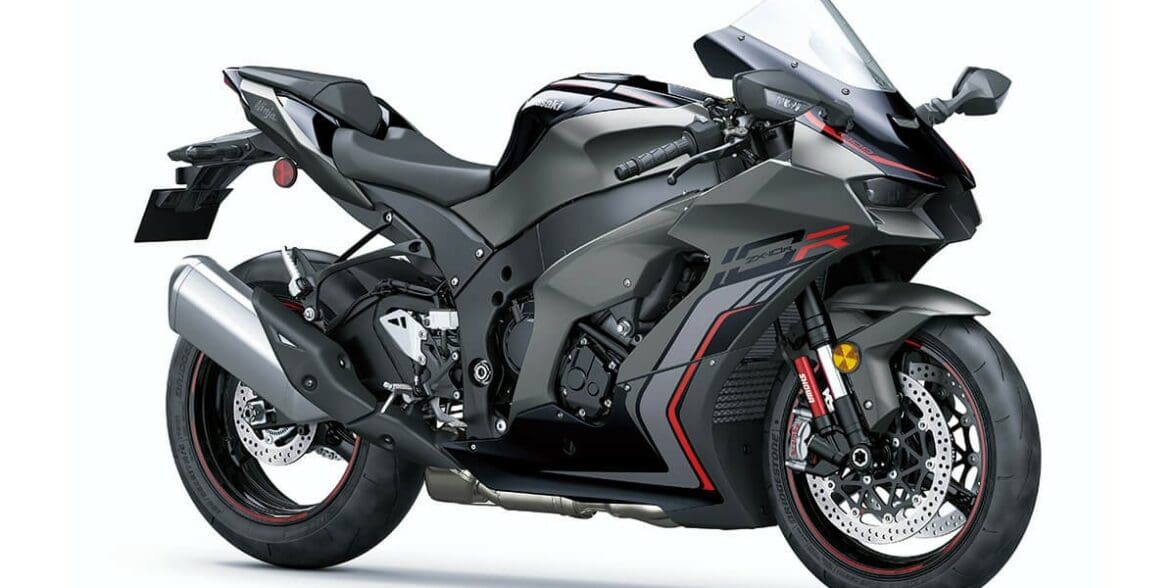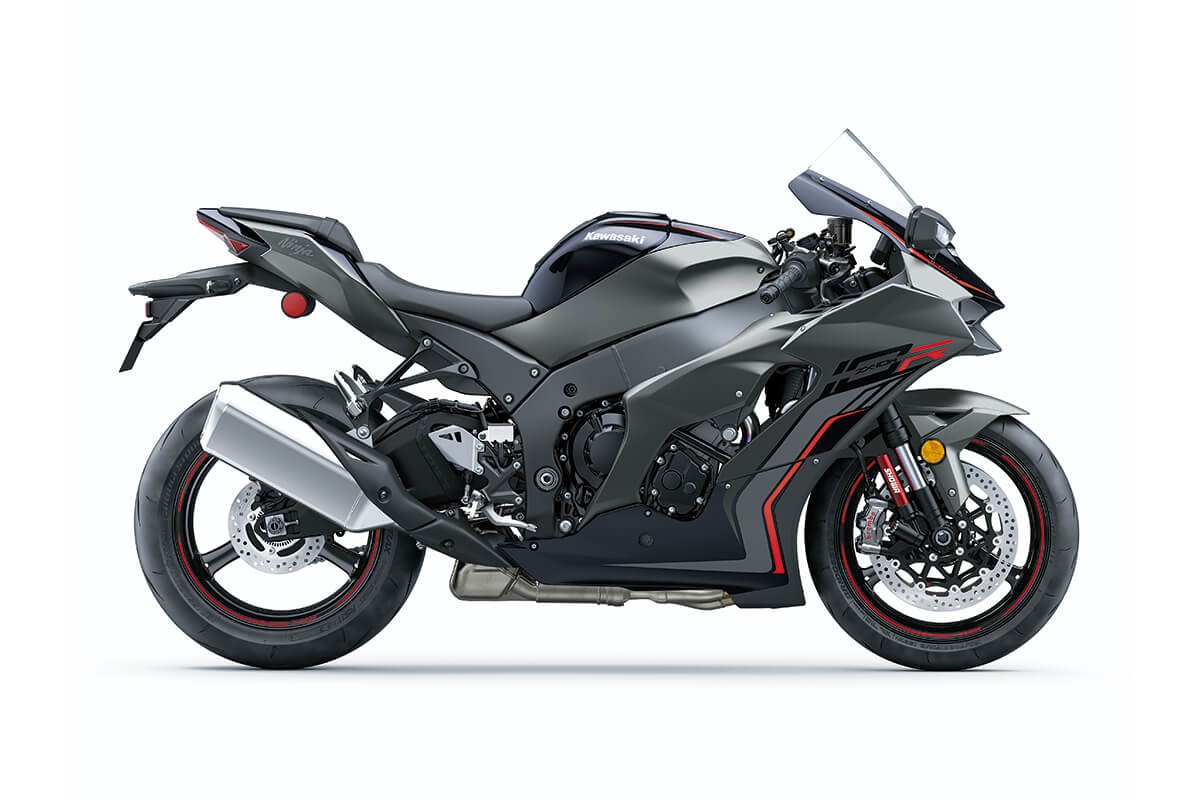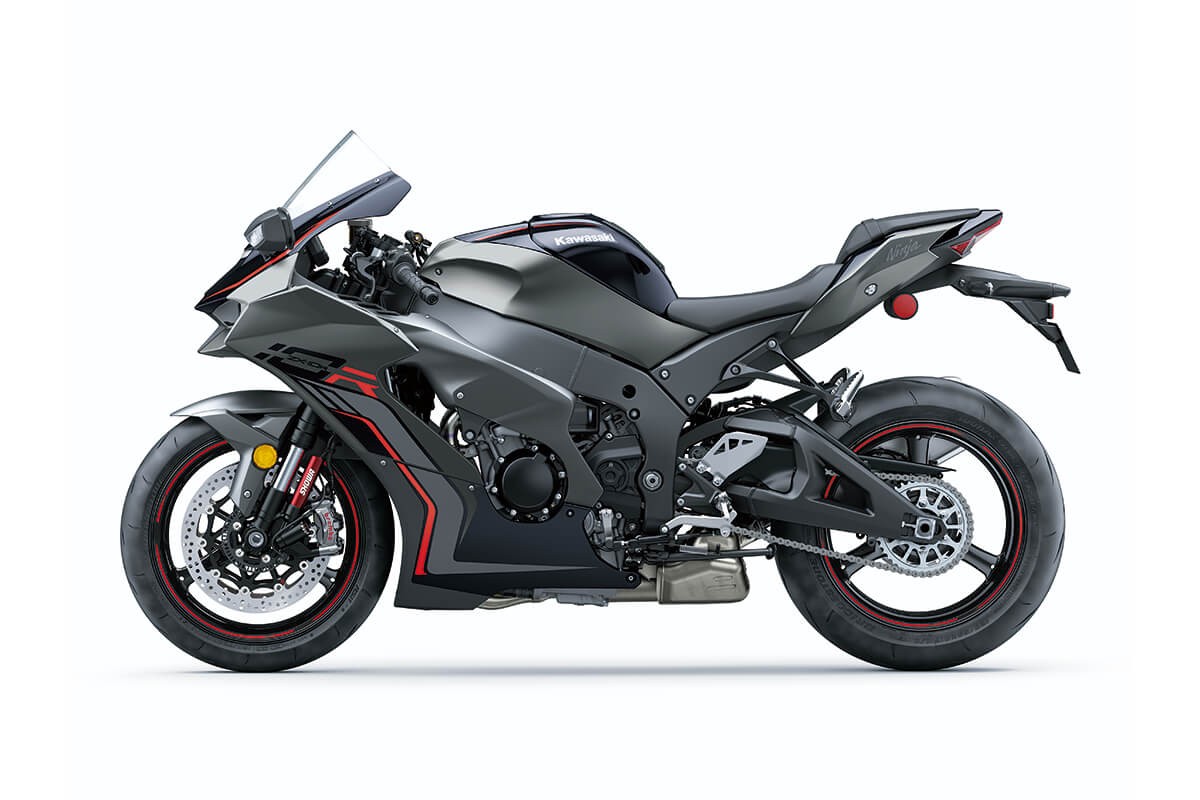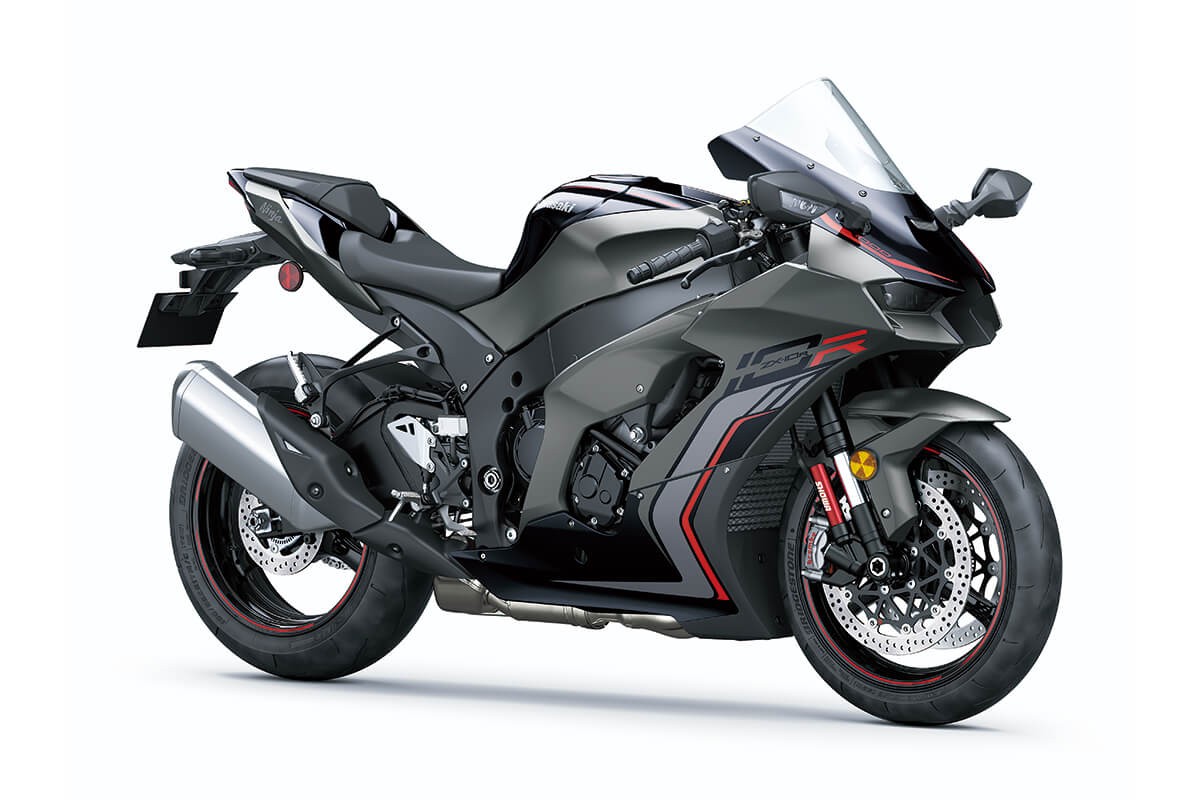The 2022 Kawasaki Ninja ZX-10R ABS: A Mark of Sport Riding Excellence
Contents
Kawasaki recently adopted their famous river mark—the logo that symbolizes the big Japanese bike brand’s ongoing desire to push farther forward—as their official company logo. But the 2022 Kawasaki Ninja ZX-10R ABS sport bike was their first non-supercharged motorcycle to sport the design, and with good reason. This powerful iteration of the Ninja turned plenty of heads with its performance in the most recent World Superbike championships, ensuring that Kawis will always be taken seriously by those craving high speed and progressive engineering.
The 2022 Ninja ZX-10R ABS doesn’t get any notable upgrades over last year’s model. It still uses the same 998cc, liquid-cooled, 4-stroke, DOHC 16-valve in-line four engine, producing 203 hp and 82.5 lb-ft of torque. It also comes with a wide array of bells and whistles for riders—like electronic cruise control, the brand’s trademarked Kawasaki Cornering Management Function, and an instrumentation panel that makes those computers in The Matrix with endless lines of code running down them look like the two-tone screen on a game boy (Google it, gen-z readers).
The bike does come in a new color scheme this year: metallic matte graphene steel gray / metallic diablo black, which looks just as high-tech and compellingly evil as it sounds. With aesthetics like that, it might just scare rivals like the BMW S1000 RR right off the road.
Kawasaki has added a truly serious sport bike soldier to their 2022 motorcycle lineup. The new Ninja ZX-10R ABS retails for $18,199 USD / $20,899 CAD. A non-ABS version is also available.
On this page: we’ve curated specs, features, news, photos/videos, etc. so you can read up on the new 2022 Kawasaki Ninja ZX-10R in one place.
Model Overview
General Info
- Price: $18,199 USD / $20,899 CAD
- Key Features:
- Powerful 998cc In-line Four engine
- Lightweight chassis for superior handling
- Showa suspension and Brembo brake system
- IMU-enhanced electronics package
Main Specs
- Engine: 998cc, liquid-cooled, 4-stroke, DOHC 16-valve in-line four
- Power: 203 hp
- Torque: 82.5 lb-ft
- Dry Weight: 456 lb (207 kg)
- Seat Height: 32.9 in (835 mm)
Competitors
2022 Kawasaki Ninja ZX-10R ABS Specifications
ENGINE |
||
| Engine | 998cc, 4-stroke, In-Line Four, DOHC, 16-valve, liquid-cooled | |
| Power | 203 Hp | |
| Bore x Stroke | 76.0 x 55.0mm | |
| Compression Ratio |
13.0:1
|
|
| Fuel System | DFI® w/47mm Mikuni throttle bodies (4) with oval sub-throttles, two injectors per cylinder | |
| Starter | Electric | |
| Lubrication | ||
DRIVETRAIN |
||
| Clutch | ||
| Transmission | 6-speed, Manual, Return Shift | |
| Final Drive | Sealed chain | |
CHASSIS |
||
| Suspension Front | 43mm inverted Balance Free Fork, adjustable stepless rebound and compression damping, spring preload adjustability/4.7 in | |
| Suspension Rear | Horizontal back-link with Balance Free gas-charged shock, stepless, dual-range (low-/high-speed) compression damping, stepless rebound damping, fully adjustable spring preload/4.5 in | |
| Brakes Front | Intelligent Braking (KIBS) (ABS only), Brembo dual semi-floating 330mm discs with dual radial mounted monobloc 4-piston calipers | |
| Brakes Rear |
KIBS-controlled (ABS only), single 220mm disc with aluminum single-piston caliper
|
|
| Tires Front | 120/70 ZR17 | |
| Tires Rear | 190/55 ZR17 | |
| Fuel Tank Capacity | 4.5 gal | |
| Color |
Metallic Matte Graphenesteel Gray/Metallic Diablo Black
|
|
ELECTRICAL |
||
| Ignition | TCBI with digital advance and Sport-Kawasaki Traction Control (S-KTRC) | |
| Spark Plugs | ||
| Headlight | LED | |
| Tail Light | LED | |
DIMENSIONS |
||
| Overall Length | 82.1 in. | |
| Overall Width | 29.5 in. | |
| Overall Height | 46.7 in. | |
| Wheelbase | 57.1 in. | |
| Ground Clearance | 5.3 in. | |
| Seat Height | 32.9 in. | |
| Curb Weight | 456.4 lb* | |
WARRANTY |
||
| Warranty | 12 Months | |
| Kawasaki Protection Plus | 12, 24, or 36 months | |
2022 Kawasaki Ninja ZX-10R ABS Features
Economical Riding Indicator
While effective vehicle speed and engine speed may vary by model, paying attention to conditions that cause the “ECO” mark to appear can help riders improve their fuel efficiency – a handy way to increase cruising range. Further, keeping fuel consumption low also helps minimize negative impact on the environment.
Electronic Throttle Valves
Electronic throttle valves also enable more precise control of electronic engine management systems like S-KTRC and KTRC, and allow the implementation of electronic systems like KLCM, Kawasaki Engine Brake Control, and Electronic Cruise Control.
Kawasaki Engine Brake Control
KLCM (Kawasaki Launch Control Mode)
KCMF (Kawasaki Cornering Management Function)
KQS (Kawasaki Quick Shifter)
Power Modes
ABS (Anti-lock Brake System)
Horizontal Back-link Rear Suspension
IMU-Enhanced Chassis Orientation Awareness
The addition of an IMU (Inertial Measurement Unit) enables inertia along 6 DOF (degrees of freedom) to be monitored. Acceleration along longitudinal, transverse and vertical axes, plus roll rate and pitch rate are measured. The yaw rate is calculated by the ECU using Kawasaki original software. This additional feedback contributes to an even clearer real-time picture of chassis orientation, enabling even more precise management for control at the limit.
2022 Kawasaki Ninja ZX-10R ABS Photos
2022 Kawasaki Ninja ZX-10R ABS Videos
First Ride & Impressions of New 2022 KAWASAKI NINJA ZX10R KRT EDITION
Superbike with the Most Tech? 2022 Kawasaki ZX-10R
Links
Kawasaki Official Websites





